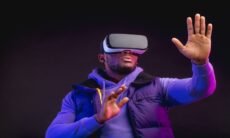Microsoft Launches Mesh-Powered Immersive Events in Teams
Microsoft has introduced public preview access to immersive events within Microsoft Teams, marking a significant step forward in enterprise virtual collaboration. This update brings the company’s Mesh-powered 3D environments directly into the core of Teams, allowing businesses to host dynamic virtual events without requiring downloads, special devices, or technical complexity.
The immersive events function enables organisers to host fully interactive, customisable events for up to 300 attendees. Users only need to click a calendar invite, hit “Join,” and instantly enter a 3D environment driven by spatial design and personalised avatars. The entire process integrates directly within the existing Teams infrastructure, removing barriers to adoption and lowering the learning curve for professionals unfamiliar with XR (extended reality) platforms.
Originally conceptualised as a mixed reality experience that relied heavily on virtual reality headsets and tailored spaces, Microsoft Mesh has now evolved. By embedding its immersive features within Microsoft Teams, Mesh becomes a mainstream enterprise tool rather than a standalone platform. This integration allows users to plan and manage 3D meetings, celebrations, and virtual town halls using the same interface they rely on for everyday communication.
The new immersive experience comes with several built-in tools to enhance interaction. These include avatar customisation, spatial audio, audience reactions, and real-time engagement features that simulate in-person conversations. The simplicity of the setup is one of its strongest selling points. From a Teams calendar, event organisers can schedule an immersive session, edit the virtual space using intuitive no-code tools, and send out invitations that grant immediate access. Attendees need only two clicks to enter a fully operational 3D environment.
From an enterprise perspective, this launch is positioned as a strategic move rather than just a feature upgrade. In an increasingly hybrid world, companies often struggle to deliver meaningful digital experiences that reflect their brand and culture. Microsoft’s solution answers this challenge by ensuring everything operates within the Microsoft 365 ecosystem, including security, identity, and compliance management.
For professionals in the XR space, the change signals a broader shift in how immersive technology is delivered and consumed. By removing the need for niche software or devices, Mesh becomes a scalable and accessible option for enterprises exploring immersive collaboration. It also positions Microsoft ahead of competitors in the race to make XR a standard workplace tool rather than an experimental side offering.
The immersive events capability offers extensive flexibility. Organisers can utilise pre-built 3D templates designed for various settings, whether formal conferences or casual team-building sessions. These templates support interactive customisation, allowing users to add corporate branding elements such as logos, video content, 3D objects, and on-screen text. Users can either join the space as animated avatars or static profile pictures, with spatial audio and freedom of movement enhancing the sense of presence.
Presenters also gain access to useful tools like spotlighting, question-and-answer teleportation, and live feedback from the audience. All of this is underpinned by Microsoft 365’s native compliance and user management framework, reinforcing its appeal to industries with strict security and regulatory requirements.
Crucially, this approach tackles one of XR’s longest-standing obstacles: accessibility. By embedding immersive experiences within the everyday tools people already use, Microsoft reduces the friction historically associated with virtual events. There are no external applications, no VR hardware requirements, and no need for lengthy onboarding. It is a solution designed for scale and simplicity.
Despite the excitement, enterprise customers will remain cautiously optimistic. Key questions around scalability, performance on lower-end hardware, and the true ease of designing compelling 3D spaces will need answers. The promise is enticing, but it must be met with a practical and reliable execution if it is to be widely adopted across industries like healthcare, finance, education, and manufacturing.
If Microsoft delivers on these fronts, the company could not only redefine its own place in the XR market but also reshape how organisations worldwide collaborate, engage, and interact in digital spaces. With immersive meetings now just a calendar invite away, the transformation from novelty to norm may happen sooner than expected.










